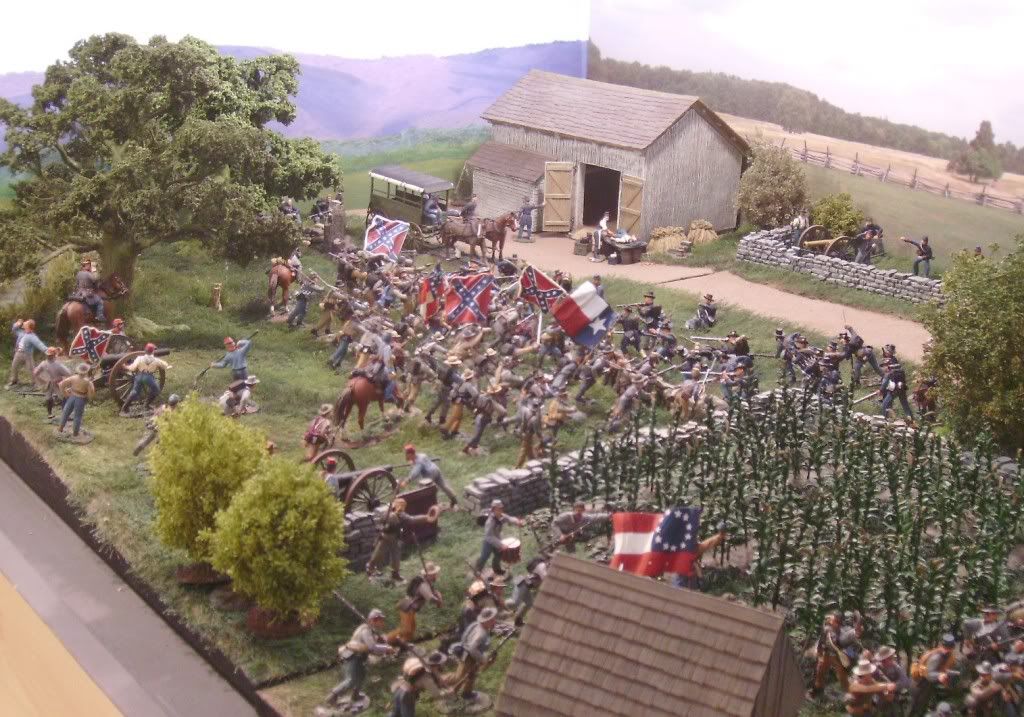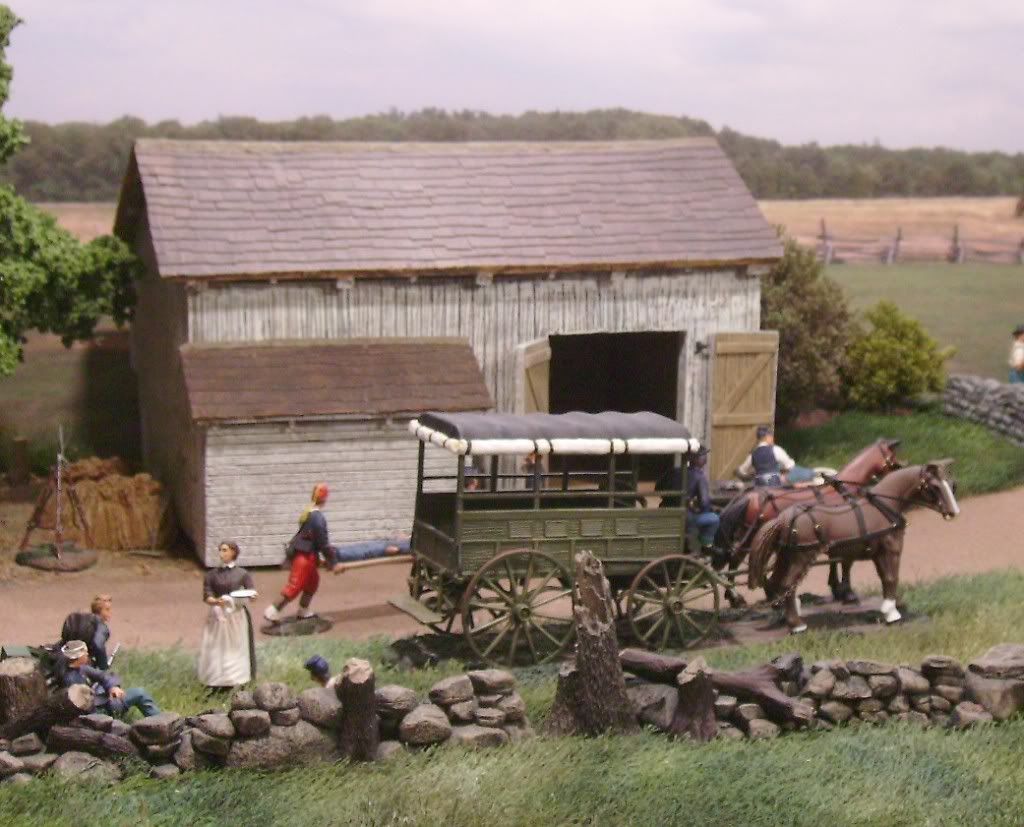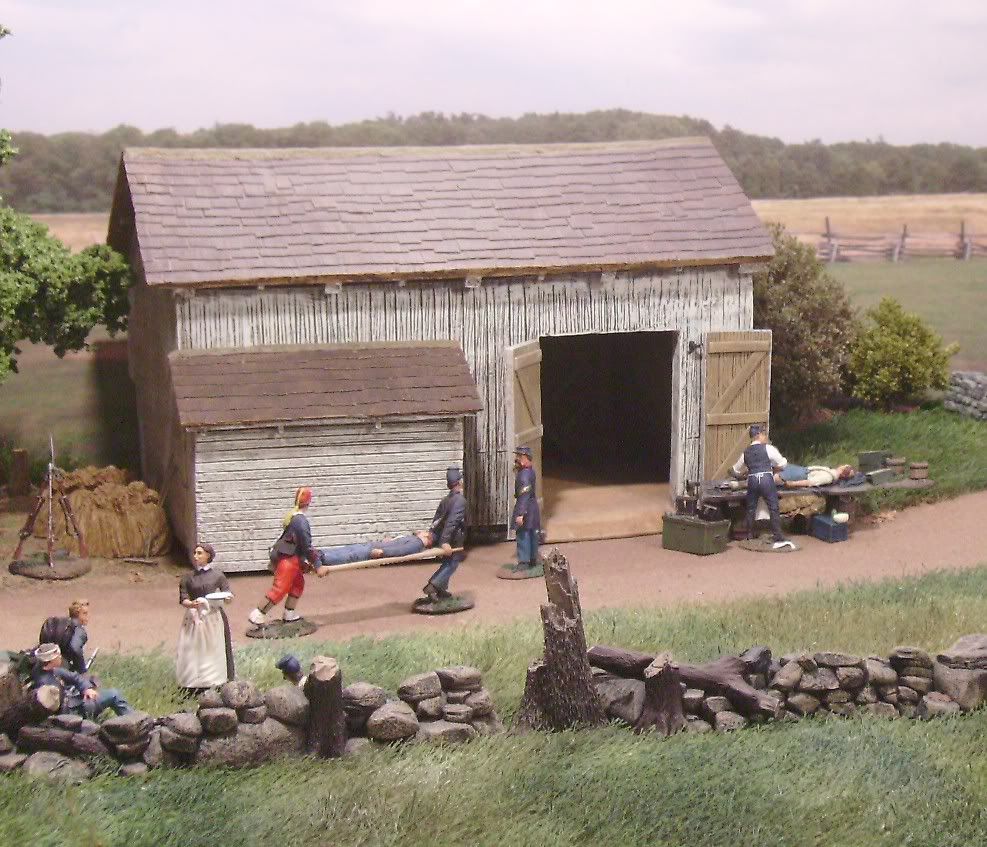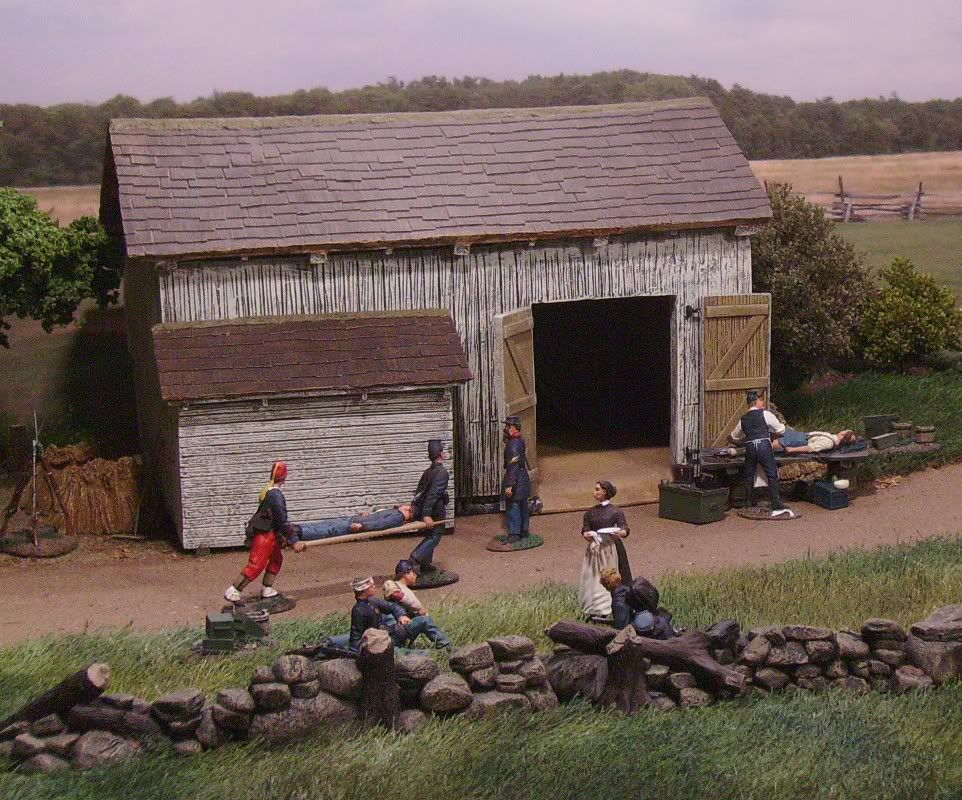You are using an out of date browser. It may not display this or other websites correctly.
You should upgrade or use an alternative browser.
You should upgrade or use an alternative browser.
ACW - My Battleground (1 Viewer)
- Thread starter mestell
- Start date
Toy Soldier Brigade
Sergeant Major
- Joined
- Aug 5, 2005
- Messages
- 1,662
Beautiful diorama. I have one question - the mounted Confedrate Officers overseeing the charge - one is the Conte Mounted Artillery Officer, but I cannot
identify the second one. Would you kindly enlighten me.
Thanks in advance.
I would like to know too.
Gustavflyer
Specialist
- Joined
- May 26, 2007
- Messages
- 273
Mike,
It is all your fault, I am now collecting again, dang you!! I must say I love your thread here, I have been enjoying this one for days now, again this is a work of art you have here!
It is all your fault, I am now collecting again, dang you!! I must say I love your thread here, I have been enjoying this one for days now, again this is a work of art you have here!
mestell
Colonel
- Joined
- Feb 12, 2008
- Messages
- 9,306
Beautiful diorama. I have one question - the mounted Confedrate Officers overseeing the charge - one is the Conte Mounted Artillery Officer, but I cannot
identify the second one. Would you kindly enlighten me.
Thanks in advance.
I would like to know too.
This is a one-of-a-kind conversion that Ken Osen did and I was lucky to acquire . . . the original figure was the mounted Sandy Pendleton figure. See post #2 of this thread for further detail and photos . . .
http://www.treefrogtreasures.com/forum/showthread.php?29330-WI-Vet-s-Museum-After-Action-Report
mestell
Colonel
- Joined
- Feb 12, 2008
- Messages
- 9,306
Three short weeks ago W. Britains sponsored a Civil War rememberance day at the Wisconsin Veteran's Museum. Months ago Richard Walker asked if I would help co-ordinate the local effort to get the involvement of members in the 2nd WI Iron Brigade re-enactors organization. I was happy to be involved in this special day and to have been able to help Richard. There was a very nice presence of Company K, 2nd WI and Battery B, 4th US Light Artiller membership to help make the day a success. At the end of the event, and unknown to me, Richard presented me with a token of his and W. Britian's appreciation for my assistance. You can imagine my surprise when I opened the present to discover it was WB #51005 "18th/19th Century Small Barn" - the first one to be distributed. Richard told me the rest had just been placed on a cargo ship and were headed to the U.S. for general distribution in about a month. Well today its just shy of a month and I suspect this fabulous model will be availble within the next two weeks.
I have had this barn on my table this past three weeks enjoying it very much. I've been having a "dickens" of a time trying to keep it out of my recent photos because I didn't want to show it off too soon before it was available. So, today I thought I would introduce it in photos of "My Battleground".
HISTORY OF THE BRIAN BARN - GETTYSBURG
For those of you who are unaware, this barn is actually a model of the Brian Barn at Gettysburg. Being a small barn, it was not a difficult task for W. Britain to develope an accurate depiction of this barn in 1/32 scale.
The Brian farm (or Bryan) is located on the Gettysburg battlefield just south of town and west of the of the old Cyclorama in Ziegler's Grove. It was the home to Abraham Brian (often spelled Bryan), an African-American widower with five children who bought the farm in 1857 when he married his third wife, Elizabeth. The twelve acre farm grew wheat, barley and hay and had a small apple and peach orchard.
The farmhouse was the headquarters of General Alexander Hays' Division of the Union 2nd Army Corps and was on the front lines during the fighting on July 2nd and 3rd.
When Brian returned to his home after the battle he found it ransacked and nearly destroyed along with his fences, crops and orchards, and the field west of his house a huge graveyard. Brian put his property back into order and resumed farming the land until 1869, when he went to work in a local hotel. He petitioned the government for $1,028 in restitution but received only $15. He died in 1875 and is buried in Gettysburg with his first two wives.
The house and barn have both been reconstructed and belong to the National Park Service.
:smile2: Mike
A barn near the battlefield is turned into a make shift field hospital

I have had this barn on my table this past three weeks enjoying it very much. I've been having a "dickens" of a time trying to keep it out of my recent photos because I didn't want to show it off too soon before it was available. So, today I thought I would introduce it in photos of "My Battleground".
HISTORY OF THE BRIAN BARN - GETTYSBURG
For those of you who are unaware, this barn is actually a model of the Brian Barn at Gettysburg. Being a small barn, it was not a difficult task for W. Britain to develope an accurate depiction of this barn in 1/32 scale.
The Brian farm (or Bryan) is located on the Gettysburg battlefield just south of town and west of the of the old Cyclorama in Ziegler's Grove. It was the home to Abraham Brian (often spelled Bryan), an African-American widower with five children who bought the farm in 1857 when he married his third wife, Elizabeth. The twelve acre farm grew wheat, barley and hay and had a small apple and peach orchard.
The farmhouse was the headquarters of General Alexander Hays' Division of the Union 2nd Army Corps and was on the front lines during the fighting on July 2nd and 3rd.
When Brian returned to his home after the battle he found it ransacked and nearly destroyed along with his fences, crops and orchards, and the field west of his house a huge graveyard. Brian put his property back into order and resumed farming the land until 1869, when he went to work in a local hotel. He petitioned the government for $1,028 in restitution but received only $15. He died in 1875 and is buried in Gettysburg with his first two wives.
The house and barn have both been reconstructed and belong to the National Park Service.
:smile2: Mike
A barn near the battlefield is turned into a make shift field hospital

6th Wisconsin
Sergeant Major
- Joined
- Jul 2, 2008
- Messages
- 1,644
Nice!!! I have long been awaiting the arrival of that barn.
thebritfarmer
Moderator
- Joined
- Jan 29, 2008
- Messages
- 10,446
A nice addition to the collection Mike and well deserved I am sure. Looks great on your dio and thanks for the photos.
Last edited:
Nick Nasta
Sergeant
- Joined
- Apr 12, 2006
- Messages
- 629
FANTASTIC diorama scenes. Action packed and realistic looking scenes. Your ACW collection is great also. Keep up the great work. I, like so many others on this forum really enjoy your historical ACW diorama scenes.
Nick
BSP
Nick
BSP
mestell
Colonel
- Joined
- Feb 12, 2008
- Messages
- 9,306
Since I last posted a photo here, thank you very much Nooooo9, 6th Wi, Joe Scott and Nick. A very rainy morning here in south central Wisconsin. A respite from yard work and an opportunity to "play" a little bit. Now that the Small Barn has been released I thought I would share a few more photos of it in use on "My Battleground" . . . .
:smile2: Mike



:smile2: Mike



Cornwallis
Sergeant
- Joined
- Aug 6, 2008
- Messages
- 626
Hi Mike,
You know I am a BIG fan of your work, this is a fantastic set and looks great, thanks for sharing your photos and keep them coming! {sm3}
You know I am a BIG fan of your work, this is a fantastic set and looks great, thanks for sharing your photos and keep them coming! {sm3}
mikemiller1955
Lieutenant General
- Joined
- Aug 3, 2008
- Messages
- 17,606
The barn looks great Mike...great addition to your table...nice pictures too...
thebritfarmer
Moderator
- Joined
- Jan 29, 2008
- Messages
- 10,446
Looks great Mike as per... I have a feeling your medical staff will be kept very busy.
Users who are viewing this thread
Total: 2 (members: 0, guests: 2)

